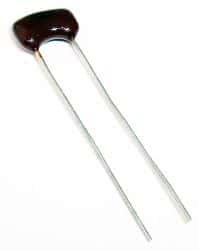We use control loops all the time. For instance, it is much easier to place an object on a tabletop with your eyes open than it is with the eyes closed. The eyes provide us with visual feedback to control the hand to place the object in the required position on the tabletop without error. In the same way, modern industrial controls regulate processes as a part of a control loop. The user sends a set point request to the controller, which then compares it to a measured feedback. The difference between the two forms the error and the controller tries to eliminate the error.
PID controls also work in the above manner, but also add a bit of mathematics. In fact, PID is an acronym for Proportional, Integral, and Derivative. The three terms allow the controller to adjust the rate at which it minimizes the error.
For instance, the proportional factor introduces a constant multiple KP. Therefore, the controller moves at a constant factor from its present position to the desired set point. If the present position is far from the desired set point, the error is large, keeping the speed of approach high. As the error decreases, the speed of approach reduces. This is similar to a car running at high speed when it is far from its destination, with the speed reducing as it nears its terminus. When error reduces to a certain level, the Integral term takes over.
The integral term controls the rate of change over a given interval based on the summation of error over time. Therefore, the rate of change is no longer linear but changes in a non-linear manner. The speed of approach reduces non-linearly as the error approaches zero, and just before the controller settles, the derivative term takes over.
The derivative term controls the rate of change of the error over a given interval. In fact, it corrects the controller’s position based on the last time the positional error was checked. In reality, the three terms do not work independently as above, but concurrently. The magnitude of error defines which among them affects the controller more than the others.
All three components of the PID controller create outputs based on the measured error of the process under regulation. For a properly operating control loop, any change in error caused by a process disturbance or set point change can be quickly eliminated by the combination of the P, I, and D factors.
Sometimes PID controllers use only the proportional term. However, a proportional-only loop works with only a sizable error. When the error becomes small, the output of the controller is too low to enable corrections. Therefore, even when the control loop has reached steady state, there is still some error. The steady state error will reduce by setting a high proportional factor. However, setting a very large proportional factor, which depends on the gain of the controller, leads to repeatedly overshooting the set point, resulting in oscillations and making the loop unstable. This leads to steady state error and this is called offset.

